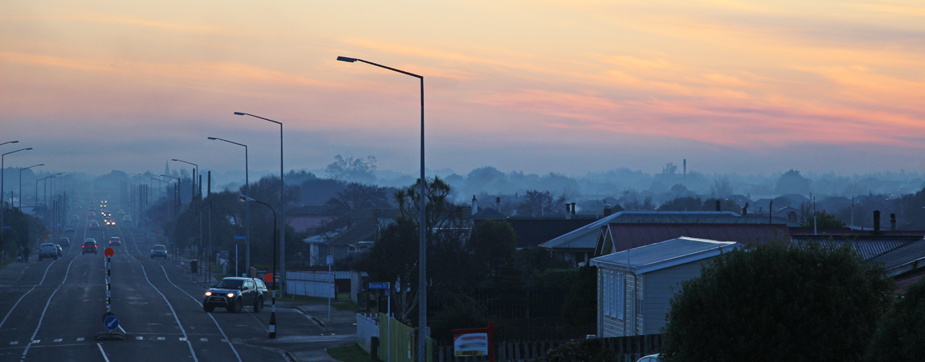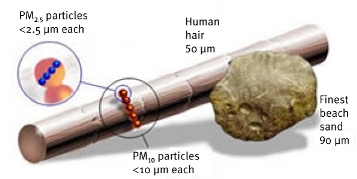Information

Air quality
Air is one of the basic elements supporting life on earth. The quality of our air directly impacts the quality of our lives, our health and wellbeing, and the environment.
Environment Southland monitors air quality across the region to compare it against the health-based national air quality standards and guidelines. Poor air quality can be particularly harmful to children, the elderly, and people with respiratory conditions such as asthma.
You can view the air quality monitoring information at envdata.es.govt.nz or at www.lawa.org.nz
The issue
Our air quality is degraded when pollutants from human activities are released into the air. These pollutants may be from domestic fires, industrial activities, motor vehicles, farming activities and outdoor burning. In our urban areas during the wintertime, domestic fires are the main cause of poor air quality.
Despite being relatively windy, Southland experiences periods of high pressure during the winter months. These high pressure systems often bring clear skies and cool nights that allow temperature inversions to develop. Temperature inversions occur a warmer layer of air overlies a cooler layer near the earth's surface. The result is that the warmer layer traps pollutants near the surface and causes the concentrations to increase.
The primary pollutant of concern in Southland is particulate matter smaller than 10 microns in diameter (PM10). Increase concentrations of PM10 are associated with numerous health problems. These problems range from minor irritation of the eyes and nose, to more severe effects when inhaled such as respiratory diseases and asthma attacks. Children and the elderly tend to be the most susceptible.
What is PM10?
PM10 is fine particulate matter smaller than 10 micrometres (10μm) in diameter. PM10 is formed through the combustion of fuels (burning), atmospheric reactions and mechanical processes including crushing, grinding and abrasion.

How does PM10 affect our health?
Breathing in PM10 is harmful to human health. Healthy people experience mainly nuisance health effects but children, asthmatics and people with other respiratory problems can experience serious health problems. Increases in mortality and other health effects are associated with increases in the 24-hour average PM10 concentrations.
Home fires leading cause of PM10
By far the biggest contributor of PM10 in the Invercargill and Gore airsheds is the smoke that comes out of home chimneys. Everybody can make a difference to air quality simply by improving the way they use their home fires.
Learn to burn smarter and cleaner

Learning to burn smarter and cleaner can make a big difference to the amount of smoke coming from your chimney. Simple steps can have a positive impact on air quality.
When using your burner, make sure you:
- Only burn dry wood with a moisture content of less than 25%.
- Burn your fire hot and bright.
- Allow your fire to burn out overnight rather than dampening it down. Smouldering fires create more smoke.
- Have your chimney cleaned regularly.
For more great tips on getting the best from your burner, download our Warm Up Wisely brochure.
Check out these great videos: